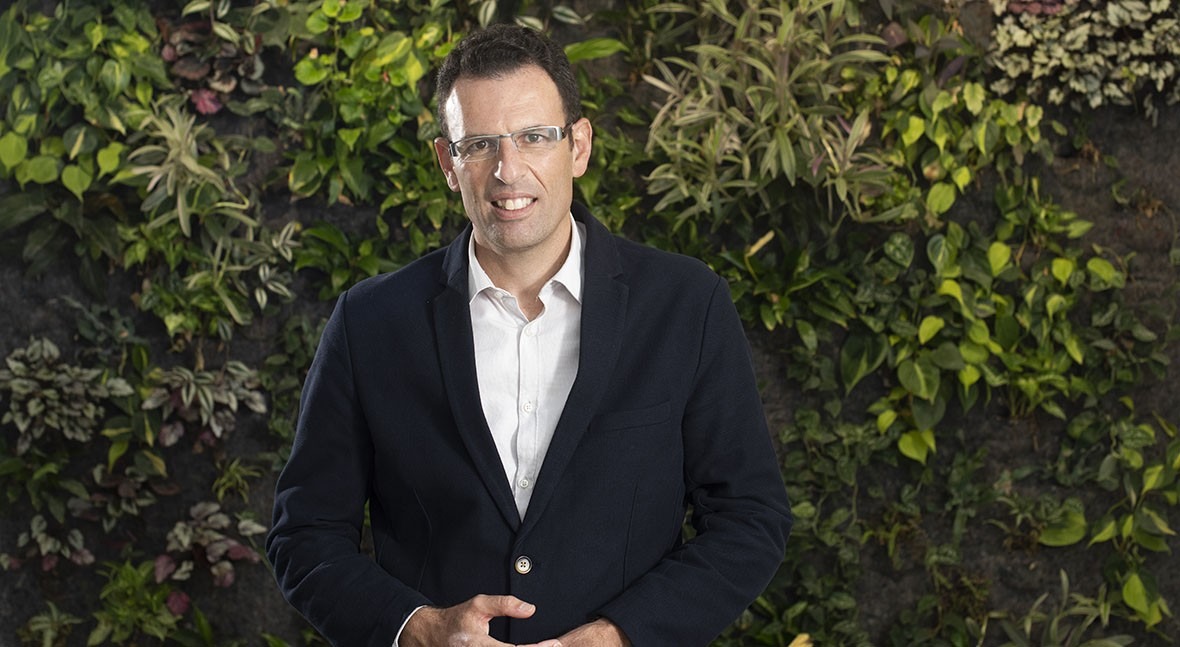Our responsibility in the water industry is to ensure that future generations will have access to clean drinking water and proper sanitation. For this to happen, the digital transformation of processes must take into account the changes we will be seeing in the next few years.
In order to use water intelligently, one of the first critical steps is to monitor and ascertain what is happening in infrastructures and assets. Over ten years ago, we were fortunate to start a pioneering project with the utility Global Omnium to include technology in its processes and infrastructures. People suggested improvements that could be applied in their daily lives, and this led to a positive change that revolutionized the entire culture of the organization. We took all the knowledge from the operations team and transferred that know-how to the information systems.
Today, other leading utilities are also applying technological solutions to the processes they manage across the entire water cycle, from the basins to returning water to the environment.
Over the last few years, we have seen how sensor technology, mathematical modeling and decision-making systems are attracting more and more investment worldwide. Water utilities are very interested in determining the best way forward. For example, they want to know when to open a pump or when there is a damaged infrastructure that needs to be repaired. This is only possible thanks to innovation.
These information systems concentrate all the knowledge accumulated in the company over decades, and ensure that it is maintained, even if the people in the organization change. They guarantee that the experience of the people who set up the water networks stays with the utility forever.
In relation to future technologies, image processing is one of the tools that will help us make different decisions, for instance, about the evolution and state of infrastructures and water sources. This can be done by analyzing the color and infrared frequencies of the images captured by satellites, drones, robots and radars.
Other types of sensor analyses, related to noise and pressure, will also play an important role in decision-making. Improving their precision, especially in the case of pressure sensors, will provide us with data to run models and apply Machine Learning and Artificial Intelligence algorithms. These must always be accompanied by a business vision to guide the data experts in order to make the process work.
Image processing will help us make decisions, for instance, about the evolution and state of infrastructures and water sources
In my opinion, one of the most important developments in the industry in the future is likely to be the separation of customer management, network and infrastructure management, and ownership. For this reason, utilities implementing technology that connects them with their customers will lead the market. For example, blockchain will be used to certify communications and transactions with customers and contractors.
Furthermore, competitive water utilities will offer customers new additional services, such as efficient energy consumption tools and ways to sell their energy. In this sense, progress will be made in providing services in homes through the world of water, in which customers will be able to solve incidents through technology.
We know that industries are more and more concerned about their water footprint, and society is beginning to demand a reduction in the environmental impact of manufacturing. For example, the production of a pair of jeans can use up to 10,000 liters of water. Therefore, industrial technologies that can make water use more efficient will be in demand.
This also applies to water purification and reuse. Our responsibility is to help reduce environmental impact, and there is still a long way to go in terms of water, carbon and energy footprint certification. At the moment, we have no standard to tell us which company is more sustainable. Yet, this is a growing need.
Water is also a key element in smart cities, where there are almost unlimited use cases for technologies. Local authorities are already looking for solutions to help them reduce the impact of tourism, reduce their water footprint and improve their energy management.
In a world where regional conflicts over water will become more and more frequent, satellite technology can help us solve them by providing us with information and transparency about the origin and status of water sources.
Water is essential for life. That is why technologies that improve access to water in underdeveloped countries, in line with the Sustainable Development Goals, are going to concentrate a large part of the investment in the planet.
We have to help reduce environmental impact, and there is a long way to go in terms of water, carbon and energy footprint certification
In Africa, utilities helped by multilateral banks have been investing in infrastructure, but improving maintenance and water quality is still a pending issue. In this region, digital analysis can help to optimize network investments to cater for a growing population.
What’s the situation like in Latin America? Although management is more advanced, there are still some persistent issues regarding access to water. Utilities are starting to focus on digitally transforming the billing cycle, measuring consumption, reducing non-revenue water and improving water service and quality.
In contrast, the Middle East is making considerable efforts into real-time monitoring via sensors and IoT solutions. They have accelerated the introduction of digital components in the infrastructure to get a better picture of what is happening and have allocated large amounts of money to this task.
In the light of climate change, utilities in the United States are introducing predictive analytics, real-time modelling and virtual stress testing in their processes. As a response to external threats, sensors and data analysis are set to be implemented, contributing to resiliency.
And on the other side of the planet, in India and China, technology is already in place. However, utilities there are looking for expert knowledge to make the most of it. For example, they want to extract value out of smart metering and digital twins.
Conversely, public companies and most private-sector firms in Europe are early adopters of technology. As a matter of fact, all the medium-sized utilities are investing in R&D processes to improve customer relationship and asset management, and operational efficiency.
All over the world, there is incredible scope for innovation. Unlike a machine, people can combine all these technologies and knowledge to transform water management. We have the opportunity to build a more sustainable world. Join us on the journey to unlocking value through digital transformation.





